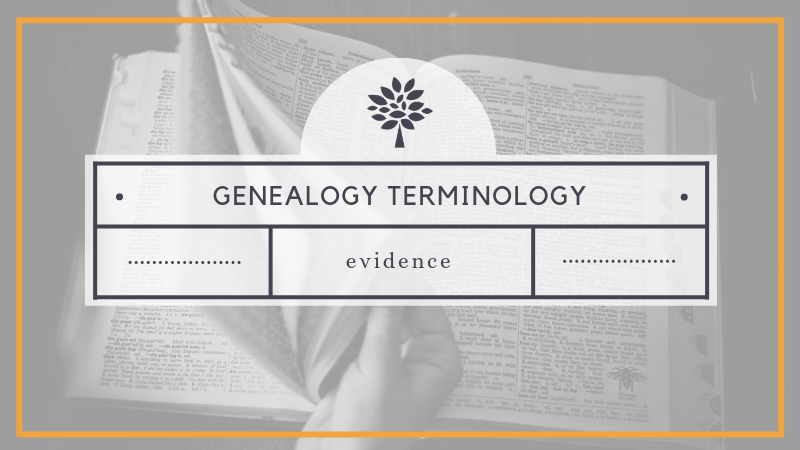
In the book Genealogy Standards, second edition by the Board for Certification of Genealogists, “evidence” is defined as:
A research question’s tentative answer, which can be right or wrong, complete or incomplete, or vague or specific; can be direct, indirect, or negative.
Distinguishing between direct, indirect, and negative evidence is helpful when analyzing sources in genealogical research.
First, direct evidence provides a direct answer to your research question. For example, direct evidence for a birthdate would be found on a birth certificate, where the exact birthdate is recorded. Direct evidence can, by itself, answer a question.
Indirect evidence is evidence that must be combined with other evidence to answer a question. For example, I am researching the family of Jacob Fisher for my Four-Generation project for accreditation. One piece of evidence in this project is a will of Jacob Fisher Jr. in which he bequeathed his farm to a John L. Miller. Death certificates for some of John L. Miller’s children show that John was married to an Elizabeth Fisher. A birth record for Elizabeth Fisher shows that her parents were Jacob and Elizabeth Fisher. By combining each of these pieces of indirect evidence, the presumption that Elizabeth Miller was Jacob Fisher Jr.’s sister can be presumed to be very likely.
Negative evidence is the absence of a situation in records where that information might be considered likely. When examining the two enumerations for the 1870 Philadelphia census recently, 2-year old son Henry Childs was present in the household of Lewis Childs in July, but absent in the second enumeration, which took place in November. This negative evidence suggests that Henry may have died between July and November 1870.
Being able to distinguish between direct, indirect, and negative evidence will help you analyze your sources as you work toward proving your hypotheses in your genealogical research.
